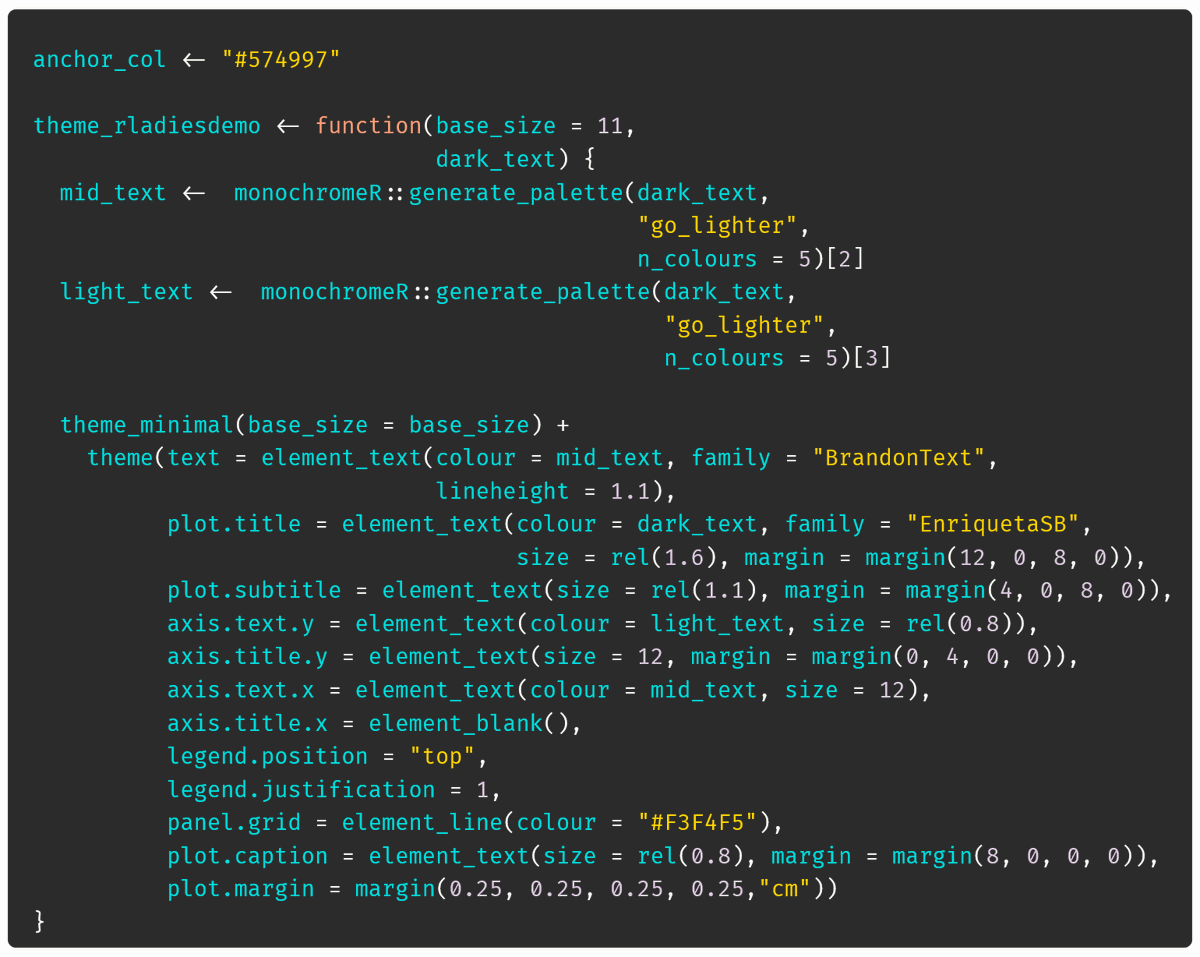
Rotating Curator for the @RLadiesGlobal community #RLadies (currently on a brief break)
5 subscribers
How to get URL link on X (Twitter) App





 @R_Girls_School Rewind. I first heard about @R_Girls_School at the @NHSrCommunity conference, where the head teacher of Green Oak Academy, Dr Razia Ghani, came to share how they'd been teaching #rstats skills as part of lessons based on key subject of the curriculum (maths, geography, etc).
@R_Girls_School Rewind. I first heard about @R_Girls_School at the @NHSrCommunity conference, where the head teacher of Green Oak Academy, Dr Razia Ghani, came to share how they'd been teaching #rstats skills as part of lessons based on key subject of the curriculum (maths, geography, etc).




 First, let's set up our plot. We're going to plot the number of penguins from each species within our dataset. We're using ggchicklet::geom_chicklet(), an anchor colour which is a blend of the blue and purple I mentioned on Day 1 and theme_rladiesdemo() which we built on Day 2.
First, let's set up our plot. We're going to plot the number of penguins from each species within our dataset. We're using ggchicklet::geom_chicklet(), an anchor colour which is a blend of the blue and purple I mentioned on Day 1 and theme_rladiesdemo() which we built on Day 2. 




 3) Text size. You can manipulate text size within theme() either by setting absolute sizes (e.g. size = 16), or relative sizes (e.g. size = rel(1.2)).
3) Text size. You can manipulate text size within theme() either by setting absolute sizes (e.g. size = 16), or relative sizes (e.g. size = rel(1.2)). 








 @c895radio My process:
@c895radio My process:
